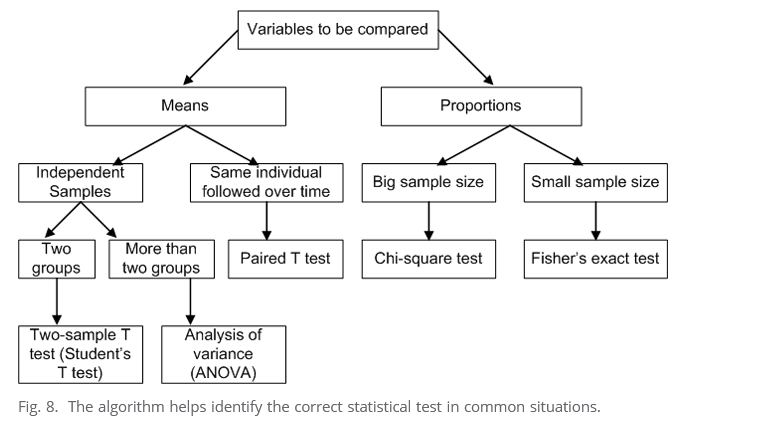comparison tests in statistics

- The Two-sample t test (also called Student's t test) is commonly employed to compare means of two independent groups. The basic requirements needed to perform this test are the two mean values, the sample variances, and the sample size. The t statistic is then obtained to calculate the p value.
- The Paired t test is also used to compare two means but unlike the Student's t test it is used in situations where the means are dependent. A typical situation is described in Question #3: two means from the same individual (baseline BMI and BMI after treatment) are compared.
- Analysis of variance (ANOVA) is used to compare means of three or more variables.
- The Chi-square test is used to compare the proportions of a categorized outcome. In Question #2, outcome (serum CRP level) is categorized as either "high" or "normal," and then presented with exposure ("HRT" or "no HRT") in a 2 x 2 contingency table. In a typical Chi-square test, the observed values in each of the cells are compared to expected (under the hypothesis of no association) values. If the difference between the observed and expected values is large, an association between the exposure and the outcome is assumed to be present. The Chi-square test can be employed for a large sample size.
- If the sample size is small, Fisher's exact test is used. It is typically preferred for situations when an expected value in either of the cells is less than 10. In Question #4, a study with a small sample size is described and Fisher's exact test would be the best way to analyze the results.
Backlinks
